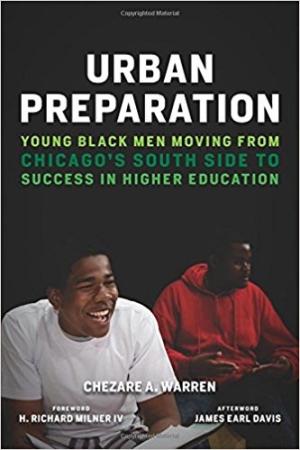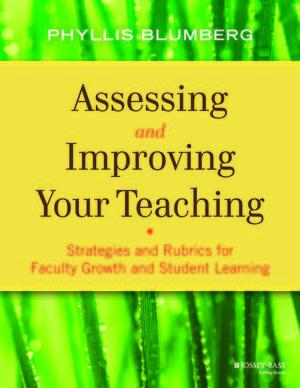Resources by Echol Nix, Jr.

Essentials of Online Teaching: A Standards-Based Guide could contribute to lively and relevant discussions about the challenges and opportunities of online courses. The book is unique because it takes the reader on a journey from the preliminary design of a course through its development and final phase of instruction. A further distinctive feature of the book is that it includes source materials from hundreds of teachers who have extensive knowledge of and experience with teaching online courses. By collaborating with such a diverse group of educators, the authors provide an impressive set of approaches to guide teaching decisions, assessing students’ progress, and reflecting on factors that influence a successful, online teaching experience. The book is a wonderful and needed resource that offers helpful models and examples of courses that integrate a range of interactive methods for learning such as discussion forums, blogs, and chats. The book begins with a general overview of online education and describes technologies for effective teaching as well as what a teacher should focus on before the semester begins. After offering suggestions on how to launch a successful online course, McCabe and Gonzáles-Flores examine how teachers monitor and support students’ learning once the course starts. In addition, they address ways to evaluate students during the middle weeks of a course and how to evaluate the effectiveness of the course design in case improvements are needed to enhance the teaching and learning process. Other important aspects of online teaching and learning are collaboration and assessment. The authors provide explanations and examples of how discussions and collaboration should work as well as how to evaluate standards of practice. In the Introduction, McCabe and Gonzáles-Flores discuss the scope of foundational theorists in distance education as well as the current work of researchers in the field. The book is a useful resource for teachers who are “new to online teaching or those who want to improve their practice” (3). This book will also benefit educational and corporate trainers, academic administrators, department heads, decision-makers, entrepreneurs, teachers, and students who work with online course development and training. In fact, anyone interested in education can use Essentials of Online Teaching: A Standards-Based Guide to “understand the challenges online instructors and trainers face and design products to serve their needs” (4). In an early chapter, the authors show how online education has evolved over the years and how various models can effectively work for teachers and students. Historically, online teaching as a “concept and term sprang onto the educational landscape in the late 1980s as computer conferencing software began to support interaction between teachers and students” (22). Eventually, those in education, including researchers, marketing professionals, and program developers started conversations that grew into new ways of instruction. In early conversations, these new ways used passive language that de-emphasized the personal dimension in teaching. According to the authors, passive language sends an incorrect message; namely, an implication that online courses are characterized, primarily, by automation rather than an active and interactive process of teaching and learning. Hence, this book describes an interactive process from beginning to end where students and teachers take advantage of asynchronous communication and do not allow remote access or intermittent exchange prevent engagement, reflection, or assessment. Recognizing the unique character of online courses, the authors encourage as much activity as possible by teachers helping students navigate the online environment through a variety of pedagogical and management strategies.

Urban Preparation contributes to a needed body of research on race that investigates “mechanisms, systems, structures, and practices that have a real bearing on students’ opportunities to learn” (vii). Urban Preparation highlights the scholarship of leading researchers who address questions related to race, poverty, achievement gaps, and the academic performance of minority students. An underlying thesis of Urban Preparation is that students in general, and minority students in particular, succeed when appropriate measures are in place. This is a resource for scholars in a variety of disciplines, including but not limited to: education, law, sociology, psychology, health, political science, and social work. The book begins with an overview of the Race and Education series at Harvard Education Press. The series editor, H. Richard Milner IV, lists several objectives that guide the series and he challenges those in power to work “for the good of humanity, to interrupt systems, policies, and practices that work only for some while others remain underserved” (ix). Reasons are given for focusing on the intersection of race and education and questions are asked related to poverty, transportation, housing, and employment, among others. In the Introduction, Chezare Warren explains why he wrote Urban Preparation: “to subvert dominant narratives that insist on casting urban-dwelling young, black men and boys as ‘at-risk’ or ‘disadvantaged’” (1). He shares the stories of these young people as counter-stories that portray them as hyper-vulnerable. He is also convinced that social inequities and stories of failure must be examined alongside counter-stories of resilience, persistence, accomplishment, and triumph. The book highlights the stories of seventeen young black men who are members of the inaugural graduating class of Urban Prep Charter Academy for Young Men, referred to as “UP.” UP is a high school for boys in the Englewood neighborhood which has one of the lowest median household incomes among Chicago’s Southside neighborhoods. However, UP is widely recognized for 100 percent of its graduating class gaining admission to four-year colleges and universities. Urban Preparation aims to: (1) describe the organizational design of UP; (2) examine the intersections of place and space to discern factors that motivate young black men to succeed against the odds; and (3) explore the factors that help narrow “opportunity gaps” for urban youth, and the implications of these factors (3). The book’s qualitative data consists of interviews, field notes, memos, and participants’ responses in order to construct a “coherent continuous narrative around dominant themes” that emerged from analyzing data (8). From the data, Warren chronicles the real-life experiences of the first graduating class by grouping the students into five composite characters with overlapping characteristics. The title of the book is derived from the school’s name but the book tells the stories of the seventeen students and “the meaning associated with growing up in an urban environment” (18). More than anything else, the book gives a better understanding of the academic and cultural strengths of urban minority youth in secondary and postsecondary settings. Urban Preparation is fundamentally a counter story as well as a critical study that challenges educators and all those interested in improving the education outcomes of black men and boys to listen to them and to learn from them.

Assessing and Improving Your Teaching by Phyllis Blumberg describes a comprehensive plan for teacher development and offers creative strategies for teachers at all stages of their professional career. Blumberg identifies many ways by which faculty can gain insights and improve the quality of their teaching to foster better student learning. This book is an excellent resource for both beginning instructors and more experienced ones especially in terms of recommended methods and tools for assessing faculty growth and learning outcomes. The book goes beyond well-documented analysis of individual strategies and contributes to the relatively few studies that integrate strategies from a hierarchical approach to improve teaching. For Blumberg, “a hierarchical approach” is one “that places the locus of control with the instructor who wants to improve, rather than with others who need to judge teaching performance,” and “provides a robust teaching enhancement process” (4). The first part of the book describes Blumberg’s hierarchical approach by initially establishing criteria that define teaching standards. Borrowing a commonly used, learning-centered approach to teaching, Blumberg focuses primarily on what the instructor does to promote student learning and discusses misconceptions about teaching. She then recommends alternative ideas and essential aspects of teaching for “deep and intentional learning.” The second and third parts of the book build on each other by describing a constructive self-assessment model which uses self-assessment rubrics for purposes of improving and assessing teacher effectiveness. Blumberg believes that teaching is composed of many different skills that can be learned. However, she encourages “systematic growth” which results from periodic, critical reflection on one’s teaching along with on-going critical review and the incorporation and documentation of both. In addition to discussing ways to improve teaching, Blumberg proposes three types of principles for assessing teaching, namely: (1) the context for assessment or what to assess; (2) the assessment methods or how to assess; and (3) the results of this assessment process. She notes that many professors who serve on promotion and tenure committees regularly comment on how little is actually analyzed or documented about the teaching process or teacher effectiveness. Using multiple sources of data about teaching effectiveness, Blumberg shows there is a need throughout the academy to supplement student course evaluation data with other appropriate procedures and tools” (116). Opposed to the older instructor-centered models in which assessment focuses on teaching performance or lecturing skills, she emphasizes other roles and skills such as course alignment, organization of educational experiences, and reflection on instruction. The tools for self-reflection and analysis include rating scales and descriptive rubrics; Blumberg also describes five cases from very different contexts of teaching and faculty members with different levels of experience. This book is a valuable contribution to literature on the evaluation of teaching in higher education because it contains both assessment forms that others can use to assess teachers as well as tools that instructors can use for self-reflection and analysis.